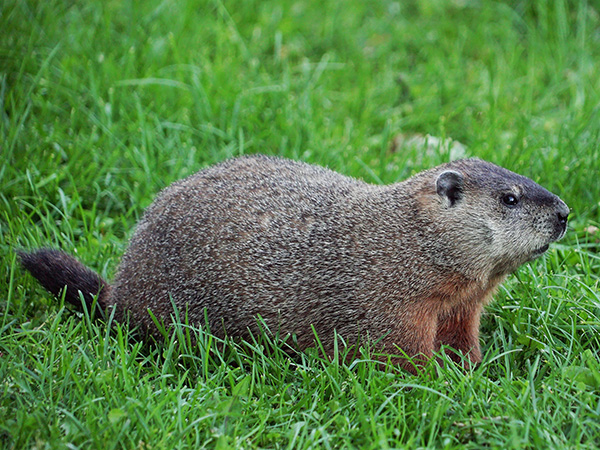Traps Aren't Always the Answer for Furry Pests
|
Feb 7, 2024 - By the dedicated team of editors and writers at Newsletter Station.

|
When faced with a furry pest problem in our homes or gardens, our first instinct is often to reach for a trap. After all, traps seem like a straightforward and effective solution, right? While traps can be helpful in certain situations, they aren't always the best answer for dealing with furry pests.
In this blog, we'll explore why traps may not be ideal and discuss alternative approaches to address furry pest issues.
- Ethical Concerns
One of the primary reasons traps may not be the best choice for dealing with furry pests is the ethical concern they raise. Many traps, especially snap traps and glue traps, can cause unnecessary suffering to animals. The animals caught in these traps may experience prolonged pain and distress before they die or are released. This is a significant issue for those who prioritize humanely treating animals.
- Ineffectiveness
Traps are not always effective at solving furry pest problems. Some pests are trap-shy and will actively avoid them, making it difficult to catch them using this method. Additionally, traps alone may not address the issue if you have a large infestation. You may need to consider more comprehensive pest control measures in such cases.
- Potential Harm to Non-Target Species
Traps can unintentionally harm non-target species. For example, if you set a snap trap to catch a rat, you may inadvertently catch a different animal, such as a squirrel or bird. This can lead to harm or even death of innocent creatures. Using traps without proper knowledge and precautions can disrupt the local ecosystem and lead to unintended consequences.
- Repeated Infestations
Traps do not address the root cause of furry pest infestations. They only capture or kill individual animals, leaving the conditions that attracted the pests in the first place intact. Without addressing these underlying factors, you may deal with repeated infestations, requiring ongoing trapping efforts.
- Disease Transmission
Handling traps and disposing of trapped pests can expose you to disease vectors and parasites that furry pests may carry. This poses health risks, especially if you do not take appropriate precautions when dealing with trapped animals. Furthermore, dead pests can attract scavengers and create new problems in your vicinity.
Alternatives to Traps for Furry Pest Control
Now that we've discussed some of the drawbacks of traps let's explore alternative approaches to deal with furry pest issues:
- Prevention:
The best way to avoid furry pest problems is prevention. Seal entry points, keep your home clean, and eliminate food sources that attract pests.
- Natural Predators:
Encourage natural predators like owls, hawks, or cats to help control furry pests in outdoor areas.
- Repellents:
Consider using natural repellents like essential oils, predator urine, or ultrasonic devices to deter furry pests from your property.
- Exclusion Methods:
Use exclusion methods such as fencing, netting, or wire mesh to keep pests out of specific areas.
- Professional Pest Control:
If the infestation is severe or persistent, it's best to consult a professional pest control service that can assess the situation and employ effective, humane solutions.
While traps may seem like a convenient solution for furry pest problems, they come with ethical concerns, potential harm to non-target species, and limitations regarding effectiveness and long-term pest control. Instead of solely relying on traps, it's essential to consider more comprehensive and humane approaches to managing and preventing furry pest infestations.
By addressing the root causes and utilizing various methods, you can achieve a pest-free environment while respecting all creatures' welfare.
Unlock the Power of Email Marketing
Harness the potential of email marketing with Newsletter Station. Reach your target audience, drive conversions, and achieve your business goals.
|
More Blogs
| May 8, 2024 |
Do Substratum Soil and Bedrock Affect My Garden?
|
| May 1, 2024 |
Tips to Help You Start an Edible Garden
|
| Apr 24, 2024 |
Maximizing Harvests and Soil Health: A Guide to Crop Rotations in Your Home Garden
|
| Apr 17, 2024 |
10 Creative Garden Edging Ideas to Elevate Your Landscape
|
| Apr 10, 2024 |
How to Ensure Your Garden Survives During Your Vacation
|
| Apr 3, 2024 |
Exploring the Green World: Essential Gardening Terms You Should Know
|
| Mar 27, 2024 |
How to Design a Front Entry Garden: Welcoming Beauty at Your Doorstep
|
| Mar 20, 2024 |
Make a Wood Pallet Garden: A Green Thumb's Guide
|
| Mar 13, 2024 |
Seeds or Seedlings? Get Your Garden Started
|
| Mar 6, 2024 |
How to Till a Garden: A Step-by-Step Guide to Cultivate Your Green Haven
|
| Feb 28, 2024 |
Perennial Vegetables to Plant for Years of Produce
|
| Feb 21, 2024 |
The Green Thumb's Guide to In-Garden Composting: Techniques and Tips
|
|
|
|